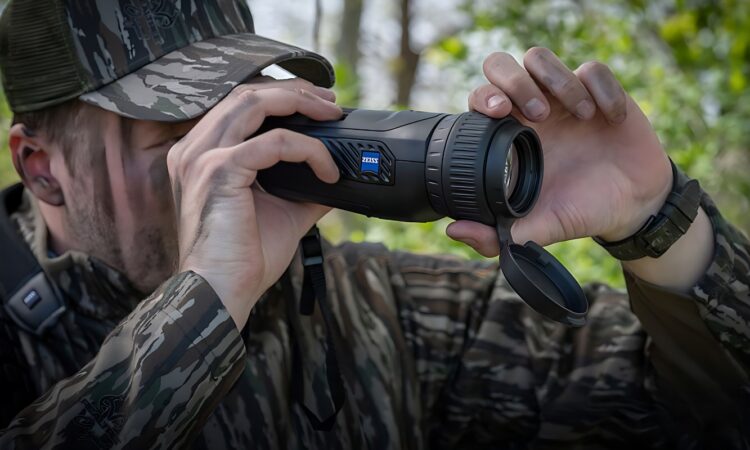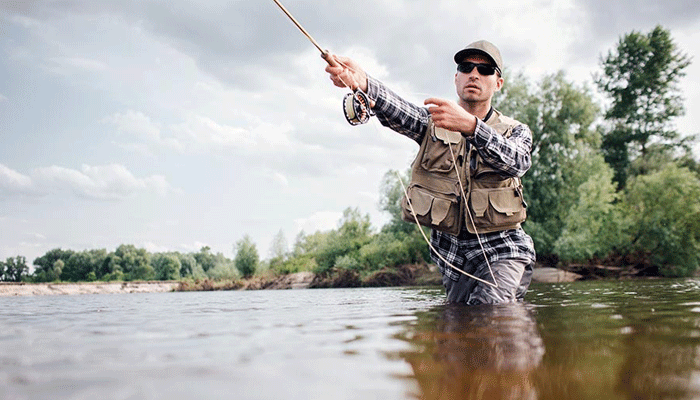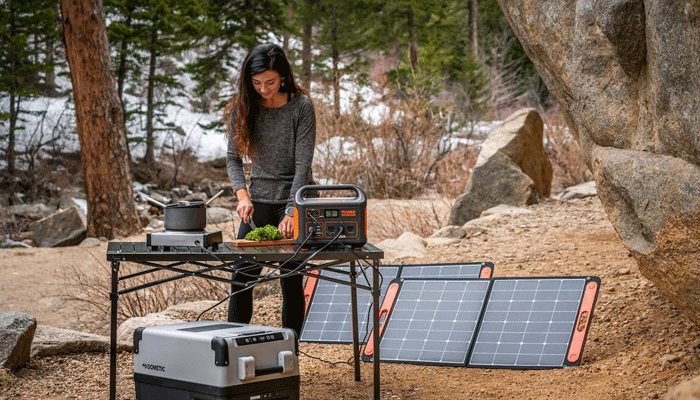
Hunting is a challenging and rewarding activity that requires skill, patience, and knowledge. Hunting at night adds another level of difficulty and excitement, as you have to deal with limited visibility, unfamiliar sounds, and unpredictable wildlife. However, night hunting also offers advantages, such as less hunting pressure, more active game, and a unique experience.
To successfully hunt at night, you must have the right equipment, techniques, and safety precautions. One of the most essential tools for night hunting is night vision, which allows you to see in the dark and gain an edge over your prey. Night vision devices (NVDs) use various technologies to amplify the available light or detect the heat signatures of animals and display them on a screen or an eyepiece.
Many types and models of NVDs are on the market, each with features, benefits, and drawbacks. Choosing the best NVD for your hunting needs can be daunting, especially if you are new to night vision. That is why we have created this ultimate guide to hunting with night vision, where we will cover the following topics:
• What are the different types of night vision, and how do they work?
• What are the factors to consider when buying a night vision device?
• How do you use and maintain your night vision device?
• What are the best practices and tips for hunting with night vision?
• What are the legal and ethical issues of hunting with night vision?
By the end of this guide, you will clearly understand what night vision is, how to choose and use it, and how to hunt with it effectively and responsibly. So, let’s get started!
What Kinds of Night Vision Are There, and How Do They Function?
Night vision devices can be classified into two main categories: image intensification and thermal imaging. Image intensification devices amplify the ambient light, such as moonlight or starlight, and convert it into a visible image. Thermal imaging devices detect the infrared radiation, or heat, emitted by animals and objects and display it as a colored image.
Image Intensification
Image intensification devices, known as night vision scopes or goggles, use a tube containing a photocathode, a microchannel plate, and a phosphor screen. The photocathode converts the incoming photons of light into electrons, which are then multiplied by the microchannel plate. The amplified electrons hit the phosphor screen, which emits green light that forms the image. The image is then viewed through an eyepiece or a monitor.
Image intensification devices are further divided into generations based on the technology and performance of the tube. The generations are:
• Gen 0: The first generation of night vision, developed during World War II, used an infrared illuminator to provide additional light. However, the image quality was poor, the range was limited, and the devices were bulky and power-hungry.
• Gen 1: The second generation of night vision, developed in the 1960s, improved the image quality and the battery life but still required some ambient light to function. The devices were also susceptible to bright light sources, such as headlights or flashlights, which could damage the tube.
• Gen 2: The third generation of night vision, developed in the 1970s, introduced the microchannel plate, which increased the amplification and resolution of the image. The devices also had better low-light performance and longer battery life but were still sensitive to bright light sources.
• Gen 3: The fourth generation of night vision, developed in the 1980s, used a gallium arsenide photocathode, which enhanced the sensitivity and clarity of the image. The devices also had a longer lifespan and a wider field of view but were more expensive and complex to manufacture.
• Gen 4: The fifth generation of night vision, developed in the 2000s, removed the ion barrier film from the microchannel plate, which reduced the noise and distortion of the image. The devices also had better contrast and color rendition but were more prone to blooming, which is the halo effect caused by bright light sources.
Thermal Imaging
Thermal imaging devices, also known as thermal scopes or cameras, use a sensor that detects the infrared radiation, or heat, emitted by animals and objects. The detector converts the infrared radiation into electrical signals, which are then processed by a microprocessor. The microprocessor assigns different colors to different temperatures and displays them on a screen or an eyepiece, especially considering the benefits of utilizing the Mileseey Discount Code.
Thermal imaging devices are not affected by ambient light and can work in complete darkness, fog, smoke, or camouflage. However, they cannot see through glass, water, or thick vegetation, and they may have difficulty distinguishing between animals of similar temperatures, such as deer and coyotes.
Thermal imaging devices are also classified into generations based on the technology and performance of the sensor. The generations are:
• Gen 1: The first generation of thermal imaging, developed in the 1960s, used a single-element sensor that scanned the scene line by line. The image quality was low, the refresh rate was slow, and the devices were large and heavy.
• Gen 2: The second generation of thermal imaging, developed in the 1980s, used a linear array of sensors that scanned the scene column by column. The image quality was improved, the refresh rate was faster, and the devices were smaller and lighter.
• Gen 3: The third generation of thermal imaging, developed in the 1990s, used a two-dimensional array of sensors that captured the scene. The image quality was high, the refresh rate was instant, and the devices were compact and portable.
What Are the Factors to Consider When Buying a Night Vision Device?
When buying a night vision device, you need to consider several factors, such as:
• Type: Depending on your hunting needs and preferences, you must decide whether you want an image intensification or thermal imaging device. Image intensification devices are cheaper, more versatile, and more realistic, but they require some ambient light and can be affected by bright light sources. Thermal imaging devices are more expensive, specialized, and abstract, but they can work in any lighting condition and detect animals more efficiently.
• Generation: You need to decide which generation of night vision device you want, depending on your budget and expectations. Higher generations offer better performance and quality but cost more and may have drawbacks. Lower generations are more affordable and accessible, but they also have some limitations and disadvantages.
• Magnification: Depending on your hunting range and target size, you must decide how much magnification you need for your night vision device. Higher magnification allows you to see farther and more transparent, but it also reduces your field of view and brightness. Lower magnification gives you a wider field of view and brightness and reduces your detail and resolution.
• Resolution: You need to check the resolution of your night vision device, which is the number of pixels or lines that make up the image. Higher resolution provides a sharper and clearer picture but consumes more power and memory. The lower resolution gives you a smoother and faster image but reduces your quality and definition.
• Battery life: You need to check the life of your night vision device, which is how long the device can operate on a single charge or set of batteries. Longer battery life allows you to use your device for extended periods but adds more weight and bulk. Shorter battery life requires carrying spare batteries or a charger, but it also reduces your load and size.
• Durability: You need to check the durability of your night vision device, which is the ability of the device to withstand shock, water, dust, and temperature. More durable devices can survive harsh conditions and rough handling but tend to be heavier and bulkier. Less durable devices are more prone to damage and malfunction but are lighter and sleeker.
• Features: You need to check the features of your night vision device, which are the additional functions and options that the device offers. Some of the standard features are:
• Illuminator: A device that emits infrared light to provide extra illumination for your night vision device. Some devices have a built-in illuminator, while others require an external one. An illuminator can extend your range and clarity, but it can also reveal your position and drain your battery.
• Recorder: A device that records the video or audio of your night vision device. Some devices have a built-in recorder, while others require an external one. A recorder can capture your hunting memories and evidence and consume your power and memory.
• Zoom: A function that allows you to adjust the magnification of your night vision device. Some devices have a digital zoom, while others have an optical zoom. A digital zoom enlarges the image by cropping and stretching it, which reduces the quality and resolution. An optical zoom changes the lens’s focal length, which preserves the quality and resolution.
• Color: A feature that lets you change the color of your night vision device. Some devices have a single-color display, while others have a multi-color display. A single-color display shows the image in shades of green, closer to reality. A multi-color display shows the image in different colors, which is more creative and artistic. If you want to buy a night vision device at a lower price, you can use the Mileseey Tools Promo Code, which can give you discounts of up to 70% off. You can find the latest Codes on various websites, such as SavingGain, AllOverCoupon, or CouponsRack. You can also sign up for their email newsletters and get exclusive deals and offers.
How Do You Use and Maintain Your Night Vision Device?
To use and maintain your night vision device, you need to follow some guidelines, such as
• Read the Manual: Before using your night vision device, read the manual carefully and familiarize yourself with the features, functions, and safety precautions. You should also check the battery level, lens condition, and device settings and ensure everything works correctly.
• Adjust the Focus: When using your night vision device, you should adjust the focus of the device to get a clear and sharp image. You can do this by turning the focus ring or knob on the device or by using the zoom function if available. You should also adjust the brightness and contrast of the device to suit your preference and the lighting condition.
• Use the Switch: When using your night vision device, you should use the switch to change the mode of the device, depending on the situation. If available, you can choose between high and low modes or image intensification and thermal imaging modes. You should also turn off the device when unused to save battery life and prolong its lifespan.
• Use the Illuminator: When using your night vision device, you may need to use an illuminator to provide extra light for your device, especially in very dark or cloudy conditions. You can use a built-in illuminator or an external one that attaches to your device or weapon. It would help if you were careful not to expose your device or your eyes to bright light sources, such as headlights or flashlights, which can damage the device or cause temporary blindness.
• Use the Recorder: When using your night vision device, you may want to use a recorder to record the video or audio of your device for your personal or professional use. You can use a built-in recorder or an external one that connects to your device or smartphone. You should also be aware of the legal and ethical implications of recording your hunting activities and respect the privacy and rights of others.
• Clean the Device: After using your night vision device, clean it correctly and thoroughly to remove any dirt, dust, moisture, or fingerprints that may affect its performance and quality. You should use a soft cloth, a lens cleaner, and a compressed air can to clean the device, and follow the instructions in the manual. You should also avoid using abrasive or corrosive materials that may scratch or damage the device.
• Store the Device: After using and cleaning your night vision device, you should store it safely and securely to protect it from theft, loss, or damage. You should use a hard case, a padded bag, or a protective cover to store the device and keep it in a cool, dry, dark place. You should also remove the batteries from the device and keep them in a separate container to prevent leakage or corrosion.
What Are the Best Practices and Tips for Hunting With Night Vision?
Hunting with night vision can be a thrilling and rewarding experience, but it also requires some skills, techniques, and precautions. Here are some of the best practices and tips for hunting with night vision:
• Plan Ahead: Before hunting with night vision, you should plan and do some research on your hunting area, your target species, and your hunting regulations. You should also check the weather, the moon phase, and the sunrise and sunset times, and choose the best time and place for your hunt. You should also scout the area beforehand and look for signs, trails, and spots of your prey.
• Practice: Before hunting with night vision, you should practice and familiarize yourself with your night vision device, weapon, and hunting gear. You should also practice your shooting, stealth, and communication skills and ensure you are comfortable and confident with your equipment and abilities.
• Be Safe: When hunting with night vision, you should be safe and responsible and follow the hunting rules and ethics. You should also wear appropriate clothing, footwear, and accessories and carry a flashlight, a whistle, a compass, a GPS, and a first aid kit in case of emergency. It would help if you also hunted with a partner, informed someone of your whereabouts and expected return time, and always be aware of your surroundings and target.
• Be patient: When hunting with night vision, you should be patient and persistent and wait for the right opportunity and shot. You should also be quiet and discreet and avoid making any unnecessary noise or movement that may alert or scare away your prey. It would help if you also used the right tactics and strategies, such as calling, baiting, or stalking, to lure or approach your prey.
• Be Respectful: When hunting with night vision, you should be respectful and humane and treat your prey with dignity and care. You should also aim for a quick and clean kill and avoid wounding or injuring your prey. You should also follow the fair chase principle and avoid hunting endangered, protected, or domestic animals. You should also dispose of your waste correctly and leave no trace behind.
What Are the Legal and Ethical Issues of Hunting With Night Vision?
Hunting with night vision can be controversial and sensitive, as it involves some legal and ethical issues that may vary depending on your location, target species, and hunting method. Some of the common problems are:
• Legality: Hunting with night vision may be illegal or restricted in some areas, as it may be considered unfair, unsafe, or unethical. You should check the local, state, and federal laws and regulations before hunting with night vision and obtain the necessary permits and licenses. You should also follow the hunting seasons, bag limits, and hunting zones and report your harvests and activities.
• Ethics: Hunting with night vision may be frowned upon or criticized by some people, as it may be seen as unsporting, unnatural, or cruel. You should respect the opinions and beliefs of others and explain your reasons and motivations for hunting with night vision. You should also follow the hunting codes and principles and pursue them honorably. You should also support the conservation and management of wildlife and habitats and contribute to the hunting community and society.
Conclusion
Hunting with night vision is a challenging and rewarding activity that requires skill, patience, and knowledge. Hunting at night also offers some advantages, such as less hunting pressure, more active game, and a unique experience.
To successfully hunt at night, you must have the right equipment, techniques, and safety precautions. One of the most essential tools for night hunting is night vision, which allows you to see in the dark and gain an edge over your prey. Night vision devices use various technologies to amplify the available light or detect the heat signatures of animals and display them on a screen or an eyepiece.
There are many types and models of night vision devices on the market, each with features, benefits, and drawbacks. Choosing the best night vision device for your hunting needs can be daunting, especially if you are new to night vision. That is why we have created this ultimate guide to hunting with night vision, where we covered the following topics:
This guide gave you a clear understanding of what night vision is, how to choose and use it, and how to hunt with it effectively and responsibly. If you want to buy or learn about night vision devices, visit the websites or click the links above. Happy hunting!








